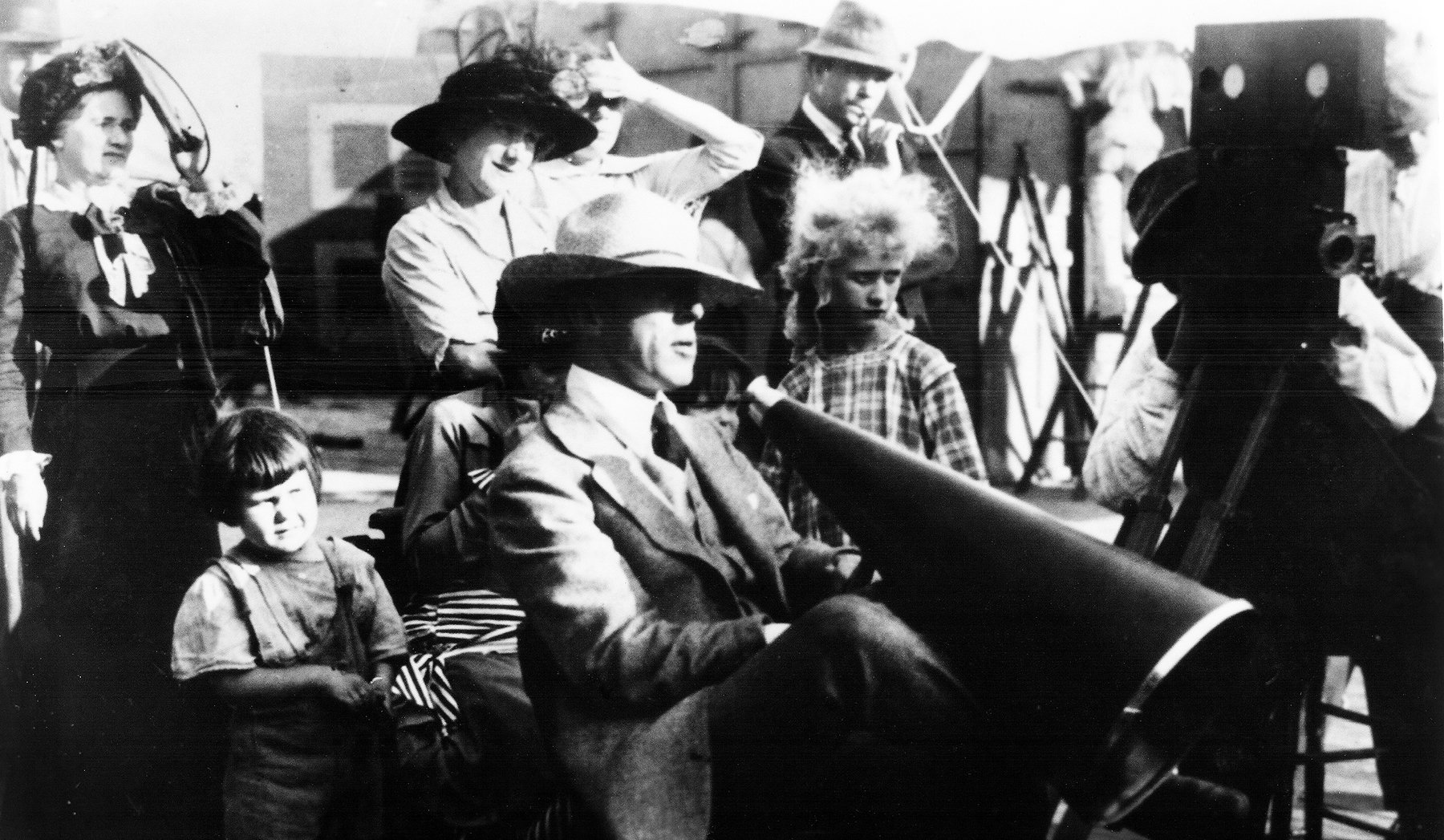
President’s Desk: A Film By… Part 2
“Frankly, I am not aware of cinematographers trying to pry credit from directors, but it does occur that directors pry credits from cinematographers, including with the ‘film by’ credit.”

A little more than 100 years ago, in 1915, the iconic American filmmaker D.W. Griffith (above, with cinematographer Billy Bitzer behind his Pathé camera) claimed in the credits of The Birth of a Nation that the movie was “a film by” none other than himself. It was the first instance of what is now commonly referred to as a “vanity credit.” As Margaret Heidenry wrote for Vanity Fair in 2015, the practice has become “an ongoing fount of backlot drama between directors and, well, most everyone else whose name scrolls by in a movie’s title sequence. When a director brands a film as his or hers, the argument goes, he or she diminishes the efforts of the some 500 cast and crewmembers’ creative contributions to an average studio picture while self-elevating their own status.”
It’s probably not a coincidence that the ASC was founded 100 years ago, when the debate surrounding the vanity credit was just beginning to rage. Our founders in the Society’s formation were very concerned about the role of the “cameraman,” as they were referred to in those days. They looked for artistic acknowledgment and strove to educate the world that a director of photography was not just a technician with a camera, but a visual artist who contributed to the actual storytelling. And so it was that our Society was founded as the American Society of Cinematographers, and not the American Society of Cameramen.
In her Vanity Fair article, Heidenry continued, “A director stamping their creative DNA on everything from a movie’s costumes to cinematography diminishes the inherently synergistic medium of filmmaking represented by the industry’s some 13 other unions and guilds.”
In particular, the Writers Guild has been more or less openly at war over the vanity credit essentially since its first appearance. In 1966, the WGA and the Alliance of Motion Picture and Television Producers forged an agreement whereby a director could only claim the vanity credit if he or she had also written the script; pushback from directors was immediate and vehement, and the ruling was abandoned. More battles followed, and then, in 2004, the Directors Guild acquiesced with its own guidelines for the credit — guidelines that they also defined as “non-binding.”
So, after a century of debate and arguments, writers and cinematographers find themselves in the same awkward position. Consider the duties of the cinematographer as noted in that most public of forums, Wikipedia: “A cinematographer or director of photography is the chief over the camera and light crews working on a film, television production, or other live-action piece, and is responsible for making artistic and technical decisions related to the image.”
Wikipedia continues with a significant observation: “The cinematographer selects the camera, film stock, lenses, filters, etc., to realize the scene in accordance with the intentions of the director. Relations between the cinematographer and director vary. In some instances, the director will allow the cinematographer complete independence; in others, the director allows little to none, even going so far as to specify exact camera placement and lens selection. Such a level of involvement is not common once the director and cinematographer have become comfortable with each other; the director will typically convey to the cinematographer what is wanted from a scene visually and allow the cinematographer latitude in achieving that effect.”
What all of this highlights is that the meaning of “collaboration” is applied selectively. In the first contact between a director and cinematographer, collaboration tends to surface uniformly — but then it often seems to erode during postproduction and in promoting a project. Frankly, I am not aware of cinematographers trying to pry credit from directors, but it does occur that directors pry credits from cinematographers, including with the “film by” credit.
Today, more directors are photographing their own films, and the possessory credit seems to be as popular as ever. Steven Soderbergh has long been photographing his own movies, but in his case, he has not only stayed away from claiming “a film by,” he has been a vocal opponent of that title. Cinema, he argues, is a collaborative medium where everyone working in it is a part of the process. “A film by” is a destructive, vain credit. I couldn’t agree more.

Kees van Oostrum
ASC President
You can read Part I here.







